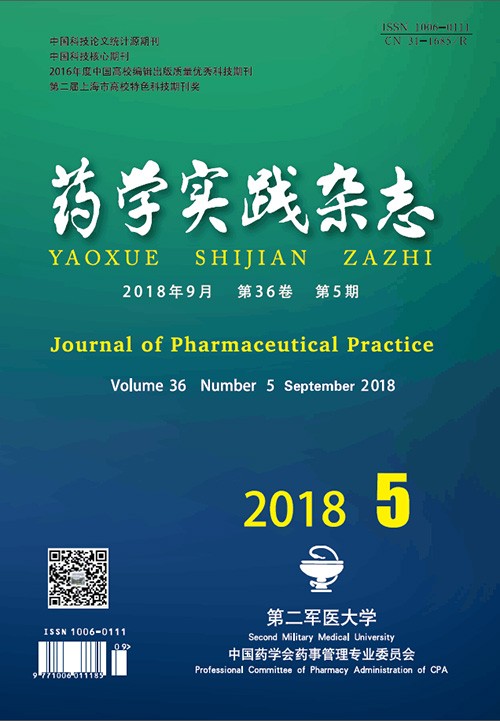|
[1]
|
中华医学会肝病学分会脂肪肝和酒精性肝病学组. 非酒精性脂肪性肝病诊疗指南(2010年修订版)[J]. 中华肝脏病杂志, 2010, 19(3):163-166. |
|
[2]
|
KE P, SHAO BZ, XU ZQ, et al. Intestinal autophagy and its pharmacological control in inflammatory bowel disease[J]. Front Immunol, 2016, 7:695. |
|
[3]
|
XIN D, ZONG-SHUN L, BANG-MAO W, et al. Expression of intestinal tight junction proteins in patients with non-alcoholic fatty liver disease[J]. Hepatogastroenterology, 2014, 61(129):136-140. |
|
[4]
|
BASHIARDES S, SHAPIRO H, ROZIN S, et al. Non-alcoholic fatty liver and the gut microbiota[J]. Mol Metab, 2016, 5(9):782-794. |
|
[5]
|
BAO Y. The progress of studying the mechanisms of immune cells in the regulation of non-alcoholic fatty liver diseases[J]. Zhonghua Gan Zang Bing Za Zhi, 2017, 25(7):553-556. |
|
[6]
|
CHEN J, LI J, YIU JHC, et al. TRIF-dependent Toll-like receptor signaling suppresses Scd1 transcription in hepatocytes and prevents diet-induced hepatic steatosis[J]. Sci Signal, 2017, 10(491):eaal3336. |
|
[7]
|
MOUZAKI M, BANDSMA R. Targeting the gut microbiota for the treatment of non-alcoholic fatty liver disease[J]. Curr Drug Targets, 2015, 16(12):1324-1331. |
|
[8]
|
KELISHADI R, FARAJIAN S, MIRLOHI M. Probiotics as a novel treatment for non-alcoholic fatty liver disease; a systematic review on the current evidences[J]. Hepat Mon, 2013, 13(4):e7233. |
|
[9]
|
LYU M, WANG YF, FAN GW, et al. Balancing herbal medicine and functional food for prevention and treatment of cardiometabolic diseases through modulating gut microbiota[J]. Front Microbiol, 2017, 8:2146. |
|
[10]
|
LI M, WANG B, SUN X, et al. Upregulation of intestinal barrier function in mice with DSS-induced colitis by a defined bacterial consortium is associated with expansion of IL-17A producing gamma delta T cells[J]. Front Immunol, 2017, 8:824. |
|
[11]
|
BETRAPALLY NS, GILLEVET PM, BAJAJ JS. Gut microbiome and liver disease[J]. Transl Res, 2017, 179:49-59. |
|
[12]
|
MU C, YANG Y, ZHU W. Gut microbiota:the brain peacekeeper[J]. Front Microbiol, 2016, 7:345. |
|
[13]
|
BUDDEN KF, GELLATLY SL, WOOD DL, et al. Emerging pathogenic links between microbiota and the gut-lung axis[J]. Nat Rev Microbiol, 2017, 15(1):55-63. |
|
[14]
|
ZHU W, GREGORY JC, ORG E, et al. Gut microbial metabolite TMAO enhances platelet hyperreactivity and thrombosis risk[J]. Cell, 2016, 165(1):111-124. |
|
[15]
|
SHEN ZH, ZHU CX, QUAN YS, et al. Relationship between intestinal microbiota and ulcerative colitis:mechanisms and clinical application of probiotics and fecal microbiota transplantation[J]. World J Gastroenterol, 2018, 24(1):5-14. |
|
[16]
|
CAVALCANTI NETO MP, AQUINO JS, ROMAO DA SILVA LF, et al. Gut microbiota and probiotics intervention:a potential therapeutic target for management of cardiometabolic disorders and chronic kidney disease?[J]. Pharmacol Res, 2018, 130:152-163. |
|
[17]
|
WAN MLY, EL-NEZAMI H. Targeting gut microbiota in hepatocellular carcinoma:probiotics as a novel therapy[J]. Hepatobiliary Surg Nutr, 2018, 7(1):11-20. |
|
[18]
|
钱晓婷,章期生. 双歧杆菌三联活菌胶囊对非酒精性脂肪性肝炎患者血清内毒素和炎症因子的影响[J]. 中国微生态学杂志, 2014, 26(4):435-437. |
|
[19]
|
WANG W, SHI LP, SHI L, et al. Efficacy of probiotics on the treatment of non-alcoholic fatty liver disease[J]. Zhonghua Nei Ke Za Zhi, 2018, 57(2):101-106. |
|
[20]
|
MANZHALⅡ E, VIRCHENKO O, FALALYEYEVA T, et al. Treatment efficacy of a probiotic preparation for non-alcoholic steatohepatitis:a pilot trial[J]. J Dig Dis, 2017, 18(12):698-703. |
|
[21]
|
DAI X, WANG B. Role of gut barrier function in the pathogenesis of nonalcoholic fatty liver disease[J]. Gastroenterol Res Pract, 2015, 2015:287348. |
|
[22]
|
ZHU L, BAKER RD, BAKER SS. Gut microbiome and nonalcoholic fatty liver diseases[J]. Pediatr Res, 2015, 77(1-2):245-251. |
|
[23]
|
杨群菲,吴建业. 双歧杆菌四联活菌片保护非酒精性脂肪性肝炎患者肠黏膜屏障功能的机制及疗效[J]. 中国微生态学杂志, 2015, 27(6):696-698. |
|
[24]
|
RITZE Y, BARDOS G, CLAUS A, et al. Lactobacillus rhamnosus GG protects against non-alcoholic fatty liver disease in mice[J]. PLoS One, 2014, 9(1):e80169. |
|
[25]
|
MIYAKE Y, YAMAMOTO K. Role of gut microbiota in liver diseases[J]. Hepatol Res, 2013, 43(2):139-146. |
|
[26]
|
SOHN W, JUN DW, LEE KN, et al. Lactobacillus paracasei induces M2-dominant kupffer cell polarization in a mouse model of nonalcoholic steatohepatitis[J]. Dig Dis Sci, 2015, 60(11):3340-3350. |
|
[27]
|
ANEST V, HANSON JL, COGSWELL PC, et al. A nucleosomal function for IkappaB kinase-alpha in NF-kappaB-dependent gene expression[J]. Nature, 2003, 423(6940):659-663. |
|
[28]
|
KIM YA, KEOGH JB, CLIFTON PM. Probiotics, prebiotics, synbiotics and insulin sensitivity[J]. Nutr Res Rev, 2018,31(1):35-51. |
|
[29]
|
SHEN F, ZHENG RD, SUN XQ, et al. Gut microbiota dysbiosis in patients with non-alcoholic fatty liver disease[J]. HBPD Int, 2017, 16(4):375-381. |
|
[30]
|
IBRAHIM SH, HIRSOVA P, GORES GJ. Non-alcoholic steatohepatitis pathogenesis:sublethal hepatocyte injury as a driver of liver inflammation[J]. Gut, 2018, 67(5):963-972. |
|
[31]
|
郑啼婴,李瑜元,聂玉强,等. 肠道菌群对非酒精性脂肪性肝病病变程度的影响[J]. 广州医科大学学报,2016, 1:9-13. |
|
[32]
|
MALAGUARNERA M, VACANTE M, ANTIC T, et al. Bifidobacterium longum with fructo-oligosaccharides in patients with non alcoholic steatohepatitis[J]. Dig Dis Sci, 2012, 57(2):545-553. |
|
[33]
|
NABAVI S, RAFRAF M, SOMI MH, et al. Effects of probiotic yogurt consumption on metabolic factors in individuals with nonalcoholic fatty liver disease[J]. J Dairy Sci, 2014, 97(12):7386-7393. |







 DownLoad:
DownLoad: